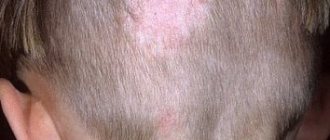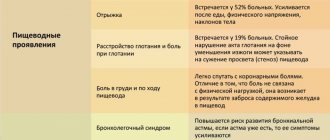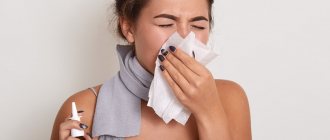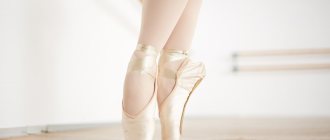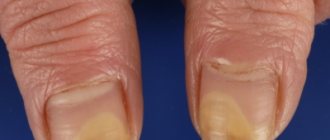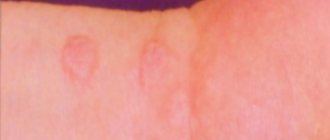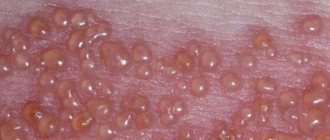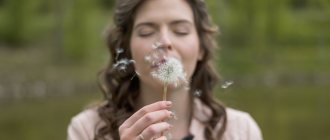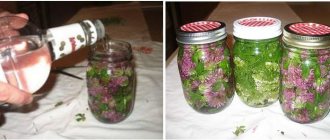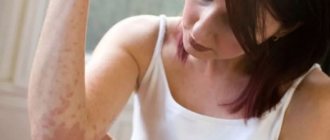Pityriasis versicolor or pityriasis versicolor is a superficial skin lesion caused by a yeast-like fungus of the genus Malassezia.
These microorganisms are representatives of typical skin microflora, are found in most people and do not cause the development of the disease. But under the influence of external or internal factors, the pathogen can transform from a non-pathogenic form into a pathogenic one: the fungus penetrates the upper layers of the skin and damages melanocytes - the cellular structures responsible for the pigmentation of the skin.
As a result, the patient develops small spots of different colors: from pale pink to red-brown, with noticeable peeling in the center. When touched, the scabs flake off easily and resemble flakes, which is what gives pityriasis versicolor its name.
What is pityriasis versicolor?
Pityriasis versicolor is a dermatological disease, most often diagnosed in people under the age of 30, while it is rare in children and the elderly. A predisposing factor to the occurrence of infection is often excessive activity of the sweat glands, so the disease often develops in the summer, at resorts and in countries with a humid, hot climate.
Lichen versicolor develops against the background of:
- chronic gastrointestinal diseases (gastritis, ulcers);
- endocrine disorders;
- autoimmune diseases;
- hormonal fluctuations, including those caused by taking oral contraceptives, pregnancy, infertility treatment;
- genetic predisposition.
Ringworm can be triggered by taking certain medications, for example, immunosuppressants, glucocorticosteroids. Uncontrolled drug therapy also often causes lichen.
A decrease in the body's natural defenses can also trigger the growth of fungal colonies.
This can lead to:
- recent serious illnesses, injuries or surgeries;
- severe vitamin deficiency;
- hypothermia of the body;
- stress;
- prolonged exposure to adverse factors (for example, work in hazardous industries, contact with chemicals and reagents);
- food poisoning;
- period of increased mental and physical stress;
- sudden climate change;
- alcohol abuse.
Among the external factors that cause tinea versicolor, wearing tight synthetic clothing in the hot season stands out. Artificial materials disrupt natural skin respiration, increase sweating, and irritate the upper layers of the skin. As a result, colonies of the fungus penetrate the epidermis and begin to actively multiply.
Causes
The main reason for the development of beach lichen has not been fully discovered. The thoughts of scientists on this issue differ slightly. Some believe that the disease is caused by the fungi Malassezia and Pityrosporum, which are present in every organism in small quantities and, when exposed to certain factors, begin to reproduce.
The main catalysts for the propagation of sunworm fungus include:
- Weak immunization of the body. Patients with weak body defenses are twice as likely to develop dermatological disease as people with strong immune systems.
- Cardiopsychoneurosis. Nervous strain, systematic severe stress and depression can influence the formation of many epidermal problems, including solar lichen.
- Excessive sweating. The work of the sweat glands above normal is often accompanied by thyroid dysfunction. A body that is constantly wet is considered an ideal place for the development of pathogenic flora.
- The use of cheap and low-quality shower gels, lotions, and deodorants. Cheap personal care products can irritate the skin, causing allergic reactions. With constant use, the epidermis becomes vulnerable to the development of fungal diseases.
- Excessive passion for solariums and natural tanning. Prolonged exposure to the sun provokes dry skin and mild burns, which leads to increased cellular turnover. Frequent changes of layers of the epidermis, which does not have time to harden, provokes the activation of dermatological ailments.
What does pityriasis versicolor look like?
The first symptom of the disease is the appearance of small spots, most often localized on the torso, arms, scalp or external genitalia. The rash may be accompanied by mild itching or may not cause the patient any noticeable discomfort.
The rashes do not have a sharp outline, are not inflamed and do not swell. Initially they are pink in color, but gradually change shade: from pink-yellow to brown and red-brown. The number of spots increases: the fungus spreads across the skin, occupying more and more surface area of the body. The rash may appear on the hands, legs, face, but never affects the mucous membranes, palms or feet, which is due to the special structure of the epithelium in these areas.
The rashes can increase in diameter (up to several centimeters) and merge with each other. Peeling zones appear in the center - when you touch the spot, the scales easily peel off. An atypical form of pityriasis versicolor includes pityriasis alba, in which the affected areas completely lose their pigment (become white). In this case, there may be no peeling.
A distinctive feature of pityriasis versicolor is a disorder of skin pigmentation. Fungal colonies damage melanocytes, which are responsible for the production of melanin, the substance responsible for the color of the skin. Areas of hypopigmentation are especially noticeable during tanning: the epithelium damaged by yeast remains white. This effect can persist for a long time even after recovery.
Pityriasis versicolor is prone to a chronic course and frequent relapses.
To quickly recover and avoid the unpleasant consequences of the infection, it is recommended to consult a dermatologist at the first symptoms of the disease:
- the appearance of a pink or reddish rash;
- mild itching of the skin;
- a feeling of tightness and flaking in certain areas of the skin of the torso and arms.
Treatment
Solar lichen is a disease of young people and the likelihood of relapse is high. When a dubious spot appears on the body, it is extremely important to identify the cause and consult a dermatologist.
You might be interested! Lichen ruber: causes, symptoms and treatment methods
Treatment is complex and long-term with the prescription of medications, antifungal ointments, creams, and gels. Doctors do not advise self-medication. Relapses are possible when affected by a fungus, or the addition of secondary infections against the background of a malfunction in the immune system.
The treatment plan is approximately as follows:
- Rinse the affected areas with anti-dandruff shampoo (Sebozol, Dermazol, Nizoral).
- Lubricating problem areas with antifungal ointments (Miramistin, Terbinafine, Cyclopiroxolamine, sulfuric acid, salicylic acid, iodine, apple cider vinegar, salicylic alcohol 5%) every 3-4 hours.
- Taking multivitamins to strengthen the immune system
- Taking treatment with antifungal drugs in tablets for a comprehensive effect on lichen in combination with ointments, shampoos, and folk remedies. Antifungal drugs are also used in the treatment of lichen on the head of a child.
Types of treatment:
- Systemic treatment consists of taking medications to avoid relapses (Orungal, Itraconazole, Ketoconazole), also vitamins, immunomodulatory drugs.
- Local or external treatment with salicylic, sulfur ointment, resorcinol, salicylic alcohol, Cyclopirox, Lamisil, Mycozolon. First you need to wash your head or other problem areas with a special shampoo, only then apply an even layer of salicylic, resorcinol or other ointments.
How is pityriasis versicolor transmitted?
Pityriasis versicolor is transmitted through household contact, but this is rare: the disease is not very contagious. The causative agent of pityriasis versicolor, a fungus from the genus Malassezia, is present on the skin of most people, but does not penetrate the epithelium and does not lead to the appearance of a rash. However, under the influence of various factors, yeast transforms into a pathogenic form and begins to destroy skin cells. This process can be triggered by various factors: from excessive sweating to endocrine disorders.
Despite the low contagiousness of this type of lichen, patients are advised to adhere to some recommendations:
- do not share bed linen or towels;
- do not wear other people's clothes;
- do not visit baths, saunas, public swimming pools.
You should also take special care to disinfect the patient’s underwear, clothing and hats: wash at high temperatures (possibly boiling), iron with a hot iron, use steam treatment.
Folk remedies
In some situations, you can prepare special medicines to get rid of skin fungus using the following recipes at home:
- Sea buckthorn oil. Treat affected skin with undiluted product 2 times a day. You can add a few drops of healing oil to any nourishing cream and lubricate lichen spots. Sea buckthorn oil has a healing, soothing effect;
- Rosehip infusion. An excellent remedy that strengthens the immune system. Pour 2 tbsp into a thermos. l. fruits, pour in 0.5 liters of boiling water. After two hours, strain the infusion. Take half a glass orally twice a day. Some herbalists recommend treating spots with “sun fungus” with infusion; wild or horse sorrel. Finely chop a bunch of leaves and combine with a tablespoon of sour cream. Apply the paste onto the stains and wash off after 15 minutes;
- Apple vinegar. Only a high-quality product is suitable for treating lichen spots. Every three hours, wipe away any blemishes on your body with apple cider vinegar. Watch the reaction. If itching or severe peeling occurs, stop the procedure;
- Rosehip oil. Buy healing oil at the pharmacy. Apply to affected areas twice daily.
Despite the fact that a disease such as solar lichen does not cause serious consequences for the patient himself and is not dangerous for others, it must be treated immediately after detection. Otherwise, it will spread very quickly throughout the body and become a real disaster, especially for women. Widespread lichen can be extremely difficult to get rid of, so try not to let the situation get worse.
Is it possible to cure pityriasis versicolor?
With proper therapy, pityriasis versicolor is easily treated and goes away within 2-3 weeks. To do this, you need to make an appointment with a dermatologist, who will conduct an examination and prescribe additional tests.
As a rule, the diagnosis is established in the presence of a typical clinical picture, but to confirm it, the following analyzes and tests are performed:
- examination under a Wood's lamp: fungal colonies are illuminated;
- microscopic examination of the scraping: shows the presence of yeast;
- Balzer test using iodine-containing solutions.
A dermatologist may also prescribe histological studies, general blood and urine tests. Based on the results of the examinations, treatment tactics are developed.
Depending on the severity and severity of the infection and the symptoms of lichen, therapy includes:
- the use of external agents (sprays, lotions, ointments) with antifungal components. If the scalp is affected, special shampoos are prescribed;
- antifungal drugs for internal use. Prescribed to patients prone to relapses of pityriasis versicolor, or to patients with atypical manifestations of infection.
If the patient suffers from severe itching (which is extremely rare), antihistamines may be prescribed.
Diagnostics
At the first signs of any pathological changes in the skin, you should consult a specialist. The dermatologist will conduct a visual examination and, based on the test results, make a diagnosis. Only after this the specialist prescribes how to treat solar lichen. In order to accurately determine the nature and nature of the pathological process, the doctor may recommend undergoing the following series of examinations:
- Balzer test. A small amount of iodine is applied to an area of skin, and in cases of lichen damage, it turns an intense brown color;
- Test for Beignet's sign. It is carried out by scraping the top layer of the epidermis;
- Diagnostics using a fluorescent lamp. The light flux is directed to the pigment spot, and the focus of the pathology is painted in dark brown, green or red tones.
All these studies are carried out against the background of a comparative analysis of the results obtained with the symptoms of diseases such as leukodermatitis, syphilitic roseola, leprosy and Giber's disease. If a specialist excludes all of the listed diseases, he will immediately prescribe a regimen and tell you how to treat solar lichen.
Is it possible to cure pityriasis versicolor permanently?
If you follow medical recommendations, pityriasis versicolor responds well to treatment: the rash completely disappears in 2-3 weeks. But the infection tends to become chronic: in this case, relapses occur every time sweating increases, for example, in the warm season, when traveling on vacation, or during intense physical activity.
To avoid this, you must:
- consult a dermatologist at the first signs of the disease. At the initial stage, pityriasis versicolor can be easily confused with other skin infections: tinea versicolor, seborrheic dermatitis, eczema, vitiligo, and so on. Each disease requires specific treatment, which is why it is so important to recognize the disease as early as possible;
- refuse self-medication. Uncontrolled use of medications and the use of “folk remedies” will not only not lead to a cure, but can also aggravate the course of the infection;
- follow your doctor's recommendations. This applies to both the use of prescribed medications and personal hygiene.
In this case, the patient can quickly recover from pityriasis versicolor and avoid its relapse.
Features in children
The manifestation of the disease in children is almost entirely similar to the symptoms in adults.
In children, spots most often form on the arms, legs, head and armpits. It is better to treat children's beach lichen only by a dermatologist and avoid using traditional methods, since a child's skin is more delicate and requires a special approach.
Children with reduced immunity are more often exposed to sun fungus, so it is worth paying attention to increasing the child’s body’s defense mechanisms.
Is it possible to sunbathe with pityriasis versicolor?
This dermatosis is popularly called “sun fungus”: during the beach season, the yeast is activated and the disease is diagnosed most often. At the same time, the areas of the skin affected by the colonies do not tan and remain white - the patient is covered with light spots, which bring him to the dermatologist’s office.
Since pityriasis versicolor can be diagnosed during rest, patients are often interested in: is it possible to sunbathe with pityriasis versicolor? Opinions differ on this matter. Previously, quartz treatment was prescribed for the treatment of lichen versicolor: under the targeted influence of ultraviolet light, colonies of the fungus died. But now many dermatologists dispute this method of treatment.
UV radiation can be dangerous for an organism weakened by infection. In addition, the occurrence of pityriasis versicolor indicates a decrease in immune strength. Therefore, experts do not recommend exposing the skin to additional stress.
If the patient doubts whether it is possible to sunbathe with pityriasis versicolor, he is recommended to consult a dermatologist. The doctor will give recommendations taking into account the individual characteristics of the body, the severity of the disease, its form and location. If you follow medical prescriptions, the patient will avoid the complications of lichen and will be able to recover in a short time.
It should also be remembered that if the patient decides to sunbathe with pityriasis versicolor, the areas of the skin affected by the colonies will remain light: it will not be possible to get an even and beautiful tan. Therefore, it is better to first get rid of the disease, and only after that return to the beach.
Complications
When asked why solar lichen is dangerous, many dermatologists answer that the disease is only a cosmetic defect. There is also a small danger of infecting people with whom the patient is in close contact (especially if they often suffer from colds or have other pathologies that reduce immunity).
Some experts note that if solar lichen is not treated, more serious consequences may develop in areas where the fungus has spread: areas of suppuration, weeping eczema. The resulting itching and desire to get rid of stains lead to neuroses.
Can pityriasis versicolor be cured with iodine?
Iodine-containing products are used in the diagnosis of lichen versicolor. Yeast colonies are sensitive to iodine, causing them to absorb it to a much greater extent than surrounding healthy skin. Therefore, if you apply an iodine solution to the epidermis, the affected areas will be much darker.
But many patients believe that iodine is suitable not only for diagnosis, but also for self-treatment of pityriasis. An alcohol solution of iodine is a popular antiseptic that is often used to disinfect the skin. Fungi from the genus Malassezia, which cause tinea versicolor, are sensitive to it and are partially killed upon contact with this substance, but it is impossible to completely destroy them with iodine.
In addition, an alcohol solution of iodine greatly dries already damaged skin, which can lead to various complications of dermatosis.
As a result of self-medication:
- the disease drags on - recovery does not occur, and the rash spreads to new areas of the body;
- the likelihood of relapse increases - after the rash disappears, it appears again when the immune system is weakened and is chronic;
- new symptoms are added to the symptoms of the disease: tightness and dryness of the skin treated with iodine, itching may occur.
Pityriasis versicolor can be cured with antifungal medications prescribed by a dermatologist. Special creams and ointments affect only colonies of the pathogen and do not affect healthy epithelium. Also, many products contain care components that additionally moisturize the skin, accelerate its regeneration and promote the resumption of melanin synthesis.
Prevention
To prevent this disease, it is recommended:
- do not overexpose yourself to the sun;
- be sure to use sunscreen;
- before sunbathing after swimming, the skin must be wiped with a towel, only then exposed to the sun;
- observe safe hygiene measures to avoid catching the fungus from other people: do not use other people’s towels, be sure to lay your own bedding on the sunbed, do not lie on bare sand;
- wear clothes made from natural fabrics.
You can cure this disease using traditional methods, but it is better to entrust the treatment to proven pharmaceutical antifungal drugs, which will be selected by a dermatologist.
